Hulk Hogan, pro wrestler and pop culture icon who excelled at earning fans' love and hate, dies at 71
Published in Entertainment News
LOS ANGELES — Hulk Hogan, the popular 1980s pro wrestler who became a worldwide pop culture icon with “Hulkamania” in the 1980s and his later endeavors in film, TV and politics, has died. He was 71.
“Terry Bollea, a.k.a. Hulk Hogan passed away this morning,” a representative for the wrestler said in confirming his death. “We are heartbroken. He was such a great human being and friend.”
Florida police and WWE told the Associated Press that authorities in Clearwater, Fla., responded to a call Thursday morning about a cardiac arrest. Hogan, whose real name was Terry Gene Bollea, was pronounced dead at a hospital, police said in a statement on Facebook.
World Wrestling Entertainment acknowledged the wrestler’s death, saying on X, “WWE is saddened to learn WWE Hall of Famer Hulk Hogan has passed away.One of pop culture’s most recognizable figures, Hogan helped WWE achieve global recognition in the 1980s. WWE extends its condolences to Hogan’s family, friends, and fans.”
“Hulk Hogan was a great American icon,” Vice President J.D. Vance wrote on X. “One of the first people I ever truly admired as a kid. The last time I saw him we promised we’d get beers together next time we saw each other. The next time will have to be on the other side, my friend! Rest in peace.”
“It’s hard to put into words what Terry ‘Hulk Hogan’ Bollea meant to professional wrestling and entertainment. He may be gone, but his memory and legacy will live forever,” wrestler Jake “the Snake” Roberts posted.
“R.I.P to a legend. HULK HOGAN,” Donald Trump Jr. wrote, including three American flag emojis and a photo of himself with the wrestler on the 2024 Republican National Convention.
Hogan’s life had major highs and some notable lows. With his charisma and look, he was arguably the most popular pro wrestler of the 1980s, the most widely recognized and a fan favorite at the height of his career. He developed into a pop culture star whose reach extended far beyond niche wrestling events.
Born in Aug. 11, 1953, in Augusta, Ga., he weighed in at a formidable 10 pounds, 7 ounces. His father, a construction worker, and his mother, a housewife and dance teacher, moved the pre-Hulkster to Tampa when he was 3. He was a star pitcher on his Little League team when he was 12 but found trouble for street fighting at 14 and was sent to the Florida Sheriff’s Boys Ranch. After high school, he spent a few years playing bass guitar at local clubs in the Tampa area and went to junior college and then the University of South Florida.
Hogan began pro wrestling in 1977 and broke into the national spotlight after signing in 1983 with what was then called the World Wrestling Federation. (The group later changed its name from WWF to World Wrestling Entertainment, or WWE.)
With his shock of blond hair, dark spray tan and iconic yellow and red attire, he brought infectious energy to the ring and took on an all-American persona. He was cast as a hero during the first nine editions of WrestleMania, delighting crowds and helping quickly grow WWF’s influence.
He was a five-time WWF champion and headlined many shows, often saving the day late in matches that didn’t necessarily feature him to the delight of growing crowds. His showdown with wrestler and actor Andre the Giant in 1988 set an American television viewership record for wrestling with a 15.2 Nielsen rating and 33 million viewers.
For a while, every weekend, millions of children — and quite a few adults — suspended reality for a few evening hours, planted themselves in front of the television and waited for the self-proclaimed real American hero to appear. Six foot 7 and 290 pounds of muscle, Hogan bounded to the screen and urged his little Hulksters to say their prayers, take their vitamins and believe in themselves.
The Make-a-Wish Foundation said in 1992 that he was their most requested personality, and he reportedly visited as many as 20 sick children a week. Hogan was also in demand as a celebrity spokesman, doing commercials in the ‘80s and ‘90s for Right Guard, Honey Nut Cheerios and Hasbro wrestling figures. He had hundreds of official Hulk Hogan products ranging from dolls to vitamins and pillowcases, and he was making millions of dollars a year.
In 1993, Hogan left WWF to pursue an acting career. His credits ultimately would include 1980s TV shows such as “The A-Team” and “Love Boat,” “Suddenly Susan” in 1999 and “Walker, Texas Ranger” in 2001. He played “Thunderlips” in 1982’s “Rocky III,” appeared in the 1990 movie “Gremlins 2: The New Batch” and starred in “Mr. Nanny” in 1993 and “The Ultimate Weapon” in 1998.
He joined the WWF’s rival World Championship Wrestling in 1994, winning its heavyweight championship six times.
In 1996, he shocked fans as he transformed from hero to heel. He adopted the persona “Hollywood” Hulk Hogan, leading the emerging New World Order group of pro wrestlers. Hogan ditched his yellow and red uniform in favor of dark colors that visually signaled his new villain era.
His transformation delivered another audience boost, this time for World Championship Wrestling (WCW).
He returned to WWE in 2002 and delighted fans by returning to his traditional hero attire. Soon after, he began winding down his wrestling career, becoming a surprise guest rather than a headliner. While wrestling is scripted, the hits and falls still took a toll on his body.
Hogan was inducted into the WWE Hall of Fame in 2005 and was recognized again in 2020 as a member of the New World Order villain group of wrestlers who delivered a new jolt of interest in pro wrestling.
However, in 2015 an 8-year-old recording surfaced of him using the n-word in reference to his daughter’s ex-boyfriend. Amid the controversy, WWE terminated its 30-year association with him and wiped him temporarily from its Hall of Fame. (He was reinstated in 2018.)
“I’m not a racist but I never should have said what I said. It was wrong. I’m embarrassed by it,” he told ABC News’ Amy Robach in 2015. “People need to realize that you inherit things from your environment. And where I grew up was south Tampa, Port Tampa, and it was a really rough neighborhood, very low income. And all my friends, we greeted each other saying that word.”
But that was far from his most challenging low. In June 1991, Hogan was subpoenaed in the trial of George Zahorian, a Harrisburg, Pa., urologist who was convicted on 12 counts of selling steroids for non-medical purposes. He was one of the five wrestlers to whom Zahorian was accused of selling steroids. But the U.S. attorney agreed to waive Hogan’s testimony because his “private and personal” matters outweighed any possible contribution to the trial. Wrestlers Roddy Piper (real name Roderick Toombs), Brian Blair, Rick Martel (real name Richard Vignault) and Dan Spivey all admitted to buying steroids from Zahorian. In addition, Zahorian testified that he treated Hogan as a serious steroid abuser and successfully got him off steroids.
His troubles mounted when he turned up on Arsenio Hall’s television show to quash newspaper reports that accused him of steroid use. He told Hall that he had used steroids on only three occasions — all under doctor’s care to rehabilitate muscle injuries. “I am not a steroid abuser,” he declared, “and I do not use steroids.” He said the newspapers were speculating once they learned he was a Zahorian patient and had printed “lies that were told in the courtroom” as if they were true. He showed the audience a photo of himself at age 10 and 196 pounds, by far the biggest guy on his baseball team.
The outcry was immediate. Former wrestlers came forward to say Hogan was lying. They said they had personal knowledge of his drug abuse. They said a person can’t make it big in professional wrestling without drugs. There was talk that his career as a commercial spokesman was over.
“I compare Hulk Hogan to (former Washington, D.C., Mayor) Marion Barry,” Superstar Billy Graham (whose real name is Wayne Coleman), the one-time villainous heavyweight champion of the World Wrestling Federation, told The Times in March 1992. “Barry went to schools and talked to kids about not doing drugs and at the same time had crack cocaine in his pants pocket. Hogan is a liar to the children, because all the time he is saying ‘I’m not using steroids.’ I think that was the most disgusting thing you could do in this country with the drug situation the way it is.”
In November 1991, four months after the Zahorian trial, steroid testing was instituted in the WWF. Initially, promoter Vince McMahon said, half the WWF wrestlers tested positive for an anabolic steroid metabolite, but that number was down to 15% by early 1992.
Perhaps the biggest scandal started in October 2012, when the website Gawker published grainy security footage showing Hogan having sex with Heather Clem, who was the wife of his then-best friend Bubba the Love Sponge, a.k.a. Todd Clem. He said he was at a terrible place in his life and had Bubba’s permission to be with Heather.
Hogan was married three times, first in 1983 to Linda Claridge, with whom he had two children, Brooke and Nick. From 2005 to 2007, the family had a reality show, “Hogan Knows Best.”
Linda filed for divorce in 2007, suspecting infidelity. Hogan later wrote in a memoir that he had friendships but not affairs with other women. The divorce cost Hogan millions — Linda got the bulk of their joint assets — and he later said he considered committing suicide during the split. Also, VH1 had canceled “Hogan Knows Best.”
“After the show, I kind of hit rock-bottom. Everything got dark, everything happened at once,” he said in 2013 on “Oprah: Where Are They Now?” “I was drinking alcohol very heavily. I always wondered how could someone possibly take their own life. I got to that point where I thought, ‘You know what, maybe this would be easy. Maybe this would be an easy way to fix things.’”
Gawker ran the 1-minute, 41-second video under the headline “Even for a Minute, Watching Hulk Hogan Have Sex in a Canopy Bed is Not Safe For Work But Watch It Anyway.” Suffice to say the video was embarrassing in many ways.
“I was with some friends and I made a wrong choice and now all of a sudden it surfaces over six years later and it’s just appalling,” Hogan said on the “Today” show after the video was published.
With financial backing from Silicon Valley billionaire Peter Thiel, who had been outed as gay by a Gawker-owned website in 2007, Hogan sued Gawker Media for invasion of privacy for posting the video, which it refused to take down.
“I was embarrassed by what it did to me as a person, but it was even embarrassing as a character,” the wrestler said on the stand in St. Petersburg, Fla. “Hulk Hogan was embarrassed.”
“What’s disturbing about Gawker isn’t what they do in a vacuum,” Hogan’s attorney Kenneth Turkel said at the close of the two-week civil trial. “It’s how proud they are of it.”
The website lost, with the case resulting in a $140-million verdict, which bankrupted Gawker Media. Univision bought the company at auction in August 2016 and renamed it Gizmodo Media Group.
After the divorce from Linda, Hogan wed Jennifer McDaniel in 2010 but the two divorced in 2022. His third and final marriage, in September 2023, was to yoga instructor Sky Daily.
When Donald Trump decided to run a third time for president, Hogan joined the campaign that would result in a Trump victory in November 2024. He appeared at various rallies proclaiming the rise of “Trumpamania” and famously tore his shirt off at the Republican National Convention. Trump blew him a kiss from where he was seated in the audience.
“As an entertainer, I try to stay out of politics, but after everything that’s happened to our country over the past four years, and [the assassination attempt] that happened last weekend, I can no longer stay silent,” Hogan said. “I’m here tonight because I want the world to know that Donald Trump is a real American hero, and I’m proud to support my hero as the next president of this United States.”
To the crowd’s delight, he roared, “Whatcha gonna do when Donald Trump and all the Trumpamaniacs run wild on you, brother?”
“We lost a great friend today, the ‘Hulkster,’” President Trump wrote Thursday on Truth Social. “Hulk Hogan was MAGA all the way — Strong, tough, smart, but with the biggest heart. He gave an absolutely electric speech at the Republican National Convention, that was one of the highlights of the entire week. He entertained fans from all over the World, and the cultural impact he had was massive. To his wife, Sky, and family, we give our warmest best wishes and love. Hulk Hogan will be greatly missed!”
----------
—Times staff writers Alexandra Del Rosario, Chuck Schilkin and Houston Mitchell, assistant managing editor for sports Iliana Limon-Romero and former Times staff writer John Cherwa contributed to this report.
----------
©2025 Los Angeles Times. Visit at latimes.com. Distributed by Tribune Content Agency, LLC.
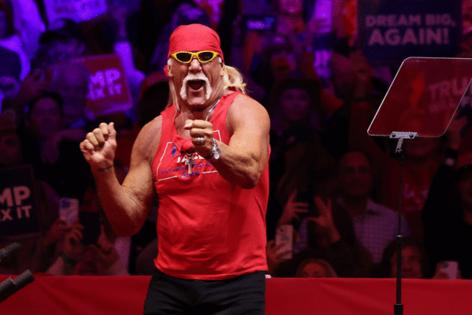
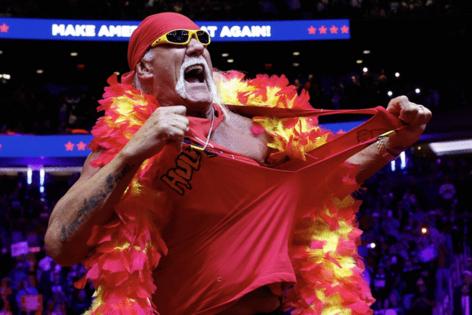


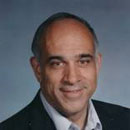

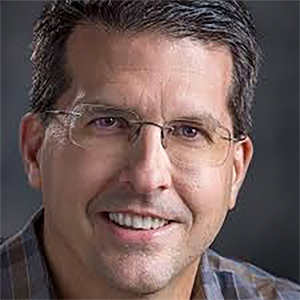
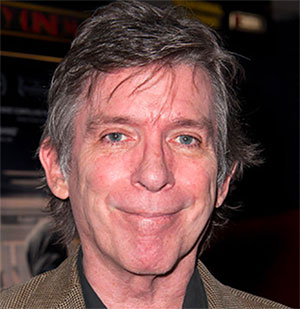
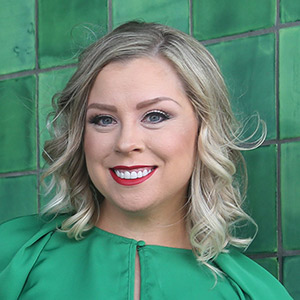

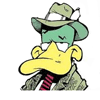
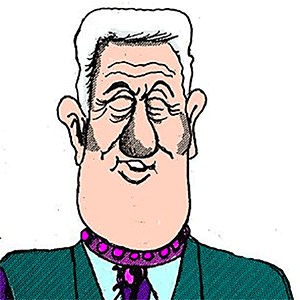
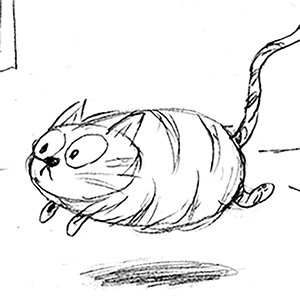
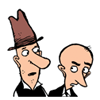
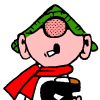

Comments